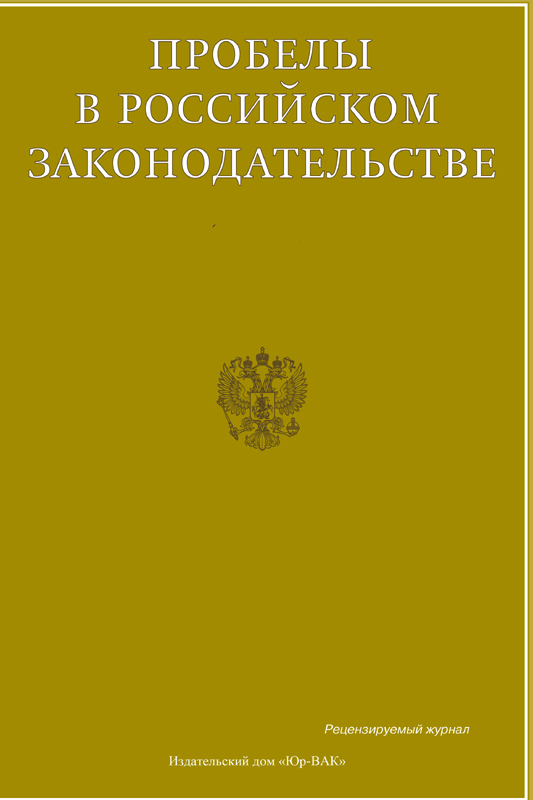New International Human Rights Architecture
- 作者: Abashidze A.H.1
-
隶属关系:
- Peoples’ Friendship University of Russia named after Patrice Lumumba (RUDN University)
- 期: 卷 16, 编号 3 (2023)
- 页面: 187-192
- 栏目: International Legal Sciences
- URL: https://journals.eco-vector.com/2072-3164/article/view/568848
- EDN: https://elibrary.ru/HDSOQL
- ID: 568848
如何引用文章
详细
In the conditions of deep crisis of interstate relations, negatively affecting the key components of the system of collective security based on the UN Charter, including universal human rights mechanisms, an informed discussion about the new international architecture of human rights protection as an important sphere of international and national legal order is becoming increasingly relevant and demanded.
As a result of analysis and consideration of key points and patterns to what extent the conceptual, normative, and institutional foundations of the currently functioning interstate human rights protection system with its strengths and weaknesses will be required for a new international human rights protection architecture, and what factors and circumstances may play a decisive role in this endeavor.
By analyzing and taking into account the key points and regularities inherent in the international political system, where sovereign states continue to play the leading role, we have drawn conclusions of conceptual and practical importance, which can and must be taken into account when building a new architecture of human rights protection that pretends to adequately replace the existing system of human rights protection. These conclusions and the resulting recommendations are based on the UN Charter and the Universal Declaration of Human Rights, which affirm the need for states and institutions of global governance to work together through international cooperation and a common understanding of human rights and freedoms. Only in the presence of such conditions is it possible for sovereign states to cooperate constructively in the field of human rights, which in turn will serve as a condition for the well-being of all. In the absence of these conditions, human rights, on the contrary, become a tool of struggle, the object of double standards in international relations and in the activities of international human rights bodies.
全文:
作者简介
Aslan Abashidze
Peoples’ Friendship University of Russia named after Patrice Lumumba (RUDN University)
编辑信件的主要联系方式.
Email: abashidze-akh@rudn.ru
ORCID iD: 0000-0003-0012-8795
SPIN 代码: 8944-1427
Scopus 作者 ID: 56364775300
Dr.Sci.(Law), Professor, Head of the International Law Department of the Peoples’ Friendship University of Russia named after Patrice Lumumba (RUDN University), Vice chairman of the United Nations Committee on Economic, Social and Cultural Rights, Honoured Lawyer of the Russian Federation
俄罗斯联邦, Moscow参考
- Human Rights Treaty Bodies: Textbook / A.Kh. Abashidze, A.E. Koneva. - 2nd ed. revised and supplemented - Moscow: PFUR, 2015. - 437 p.
- Kartashkin V.A. Human rights: international protection in the context of globalization. Moscow: Norma, 2009. 288 p.
- International protection of human rights : textbook / A.Kh. Abashidze, A.I. Abdullin, E.S. Alisievich [and others]; edited by A.Kh. – 2nd edition, revised and supplementary ed. - Moscow : PFUR, 2020. – 510 p.
- Kasyanov R.A., Torkunova E.A. Ensuring Human Rights in the Post-Soviet Space // Vestnik MGIMO. 2015. № 5 (44). Pp. 56-62.
- Regional Systems of Human Rights Protection: Textbook for Bachelor’s and Master’s Degree / ed. by A.Kh. - 2nd ed., revised and extended - M.: Publishing house, Yurite, 2017. - 378 p.
补充文件








